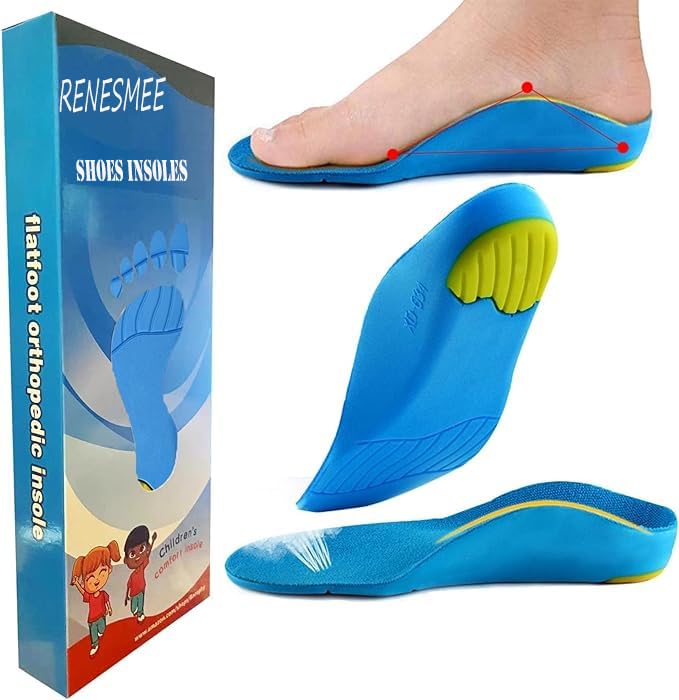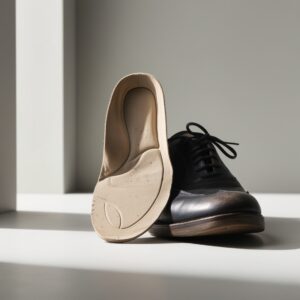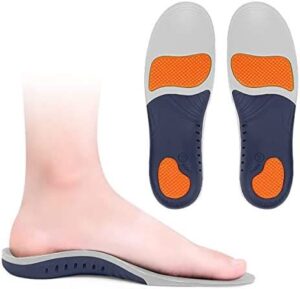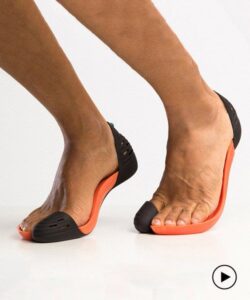Renesmee shoe insole arch support best for your foot support and comfort

Introduction
Shoe insoles, often overlooked, can make or break your comfort level, especially when you’re on your feet all day. Whether you’re an athlete, a busy professional, or someone dealing with foot pain, the right shoe insole can provide the support and relief you need. But how do you know which type of insole is best for you? In this comprehensive guide, we’ll walk you through everything you need to know about shoe insoles—what they are, the different types available, their benefits, and how to choose the right pair.


What Are Shoe Insoles?
Shoe insoles, also known as footbeds or inner soles, are removable pads inserted into your shoes to offer additional support, cushioning, and comfort. They are designed to fit inside various types of footwear and can help address multiple foot issues, including arch pain, flatfeet, and plantar fasciitis.

How Does Shoe Insoles Work?
Insoles work by distributing the pressure more evenly across your feet when you walk or stand. Some insoles also provide arch support, aligning your foot with your body and improving posture. They can absorb shock, reduce the risk of injury, and provide relief from foot pain caused by long periods of standing or walking

The Key Benefits of Using Shoe Insoles
Wearing shoe insoles isn’t just about comfort. They offer a range of health and lifestyle benefits, some of which may surprise you.
- Improved Comfort
The most obvious benefit of insoles is added comfort. Whether you’re wearing dress shoes, running sneakers, or work boots, a good insole can reduce the pressure on your feet, making any shoe feel like it was custom-made for you.
- Enhanced Foot Support
Insoles can correct foot alignment issues and provide arch support. This is particularly useful for people with flat feet or high arches, as these conditions can lead to imbalance and discomfort.
- Pain Relief for Various Conditions
Many people use insoles to relieve foot pain caused by conditions like plantar fasciitis, metatarsalgia, or bunions. Specialized insoles are designed to target specific areas of the foot to provide relief.
- Shock Absorption
Insoles often have cushioning layers that absorb the shock from walking or running, which can prevent foot injuries and reduce the strain on your joints.
- Improved Posture and Alignment
Good foot support helps with overall body alignment. When your feet are properly aligned, you can reduce pain in other parts of your body, including your knees, hips, and lower back.
Types of Shoe Insoles
There are several types of shoe insoles, each designed for different needs. Understanding the various kinds can help you select the right one for your situation.

- Comfort Insoles
As the name suggests, comfort insoles are designed to add an extra layer of cushioning. They are made from soft materials like foam or gel and are ideal for those who spend long hours on their feet but don’t have significant foot problems.
- Arch Support Insoles
These insoles are specifically designed to support the arch of your foot. They can be beneficial for people with flat feet or high arches, as they help align the foot and provide relief from related pain.
- Orthotic Insoles
Orthotic insoles are medical-grade products often prescribed by a doctor or podiatrist. They are used to correct foot alignment and are ideal for people with severe foot conditions like overpronation or plantar fasciitis.
- Sports Insoles
Designed for athletes, sports insoles offer additional shock absorption and arch support. These insoles are often made from durable materials that can withstand the repetitive impact of activities like running, hiking, or basketball.
- Gel Insoles
Gel insoles offer a high level of cushioning, making them great for people who need extra comfort, particularly on the ball of the foot or heel. These insoles can also absorb shock and reduce impact stress.
- Memory Foam Insoles
Memory foam insoles Mold to the shape of your foot, providing a customized fit. They offer good cushioning but may lack the firm support required for more severe foot conditions.
Common Foot Problems That Insoles Can Help With

Shoe insoles aren’t just for comfort—they can also help alleviate various foot issues.
- Plantar Fasciitis
Heel pain is frequently caused by plantar fasciitis. Insoles designed for this condition provide extra heel support and cushioning to reduce pain and inflammation.
- Flat Feet
People with flat feet can benefit from insoles that offer strong arch support. These insoles help to prevent overpronation (where the foot rolls inward) and relieve pain associated with the condition.
- High Arches
High arches can cause discomfort and imbalance. Arch support insoles can provide the necessary structure to help distribute your weight more evenly across your foot.
- Bunions
Bunions are lumps of bone that develop on the big toe joint. Certain insoles can help relieve pressure on this area, preventing further pain and irritation.
- Metatarsalgia
This condition causes pain in the ball of the foot. Insoles with extra cushioning in the forefoot area can provide relief.
How to Choose the Right Shoe Insole
With so many options on the market, choosing the right insole can be overwhelming. Here are some factors to consider:
- Identify Your Foot Type
The first step in choosing an insole is to understand your foot type. Do you have high arches or are your feet flat? Do you overpronate? Identifying your foot type will guide you toward the insole that offers the best support.
- Consider the Activity Level
Your activity level will influence your choice of insole. If you’re an athlete, you’ll need insoles that offer extra shock absorption and support. For everyday wear, comfort insoles may be sufficient.
- Look for the Right Material
Insoles come in a variety of materials—gel, foam, memory foam, and more. Choose a material that provides the right balance of comfort and support for your needs.
- Get the Right Size
Always check the sizing chart when buying insoles. While many are designed to be trimmed to fit your shoe, others come in specific sizes that should match your foot size.
- Think About Special Needs
If you have a specific foot condition, such as plantar fasciitis or bunions, look for insoles designed to address these issues. You may also want to consult a podiatrist for custom orthotics if your condition is severe.
How to Use and Maintain Your Insoles
Once you’ve chosen the perfect pair of insoles, it’s important to take care of them to ensure they last as long as possible.
- Insertion and Fit
When inserting your insoles, make sure they fit snugly in your shoe without causing any discomfort. If they are too large, trim them according to the manufacturer’s guidelines.
- Cleaning Your Insoles
Most insoles can be cleaned by hand with warm water and mild soap. Avoid using harsh chemicals or submerging them in water, as this can break down the materials.
- Replacement Frequency
Even high-quality insoles wear out over time. Replace them when you notice signs of wear, such as thinning, loss of support, or discomfort.
Custom vs. Over-the-Counter Insoles
Should you invest in custom insoles, or are over-the-counter options sufficient? It depends on your needs.
- Custom Insoles
Custom insoles are molded specifically to your feet and are designed to address serious foot problems. They’re more expensive but offer superior support and can last longer.
- Over-the-Counter Insoles
Over-the-counter insoles are readily available and can address a wide range of common foot issues. They are more affordable and convenient but may not offer the same level of support as custom options.
Conclusion
Shoe insoles are more than just a comfort accessory—they are essential for foot health and overall body alignment. Whether you’re dealing with foot pain, have a specific foot condition, or simply want to add extra comfort to your everyday shoes, there’s an insole out there for you. By understanding your foot type and needs, you can find the perfect insole to enhance your comfort and well-being.
FAQs
- How often should I replace my shoe insoles?
Insoles typically last about six months with regular use, but this can vary depending on the material and activity level. - Can I use the same insoles for different shoes?
Yes, but make sure they fit properly in each pair. Some insoles can be trimmed to fit multiple shoes. - Are custom insoles better than store-bought ones?
Custom insoles offer a higher level of support but are more expensive. Store-bought insoles work well for general comfort and minor foot issues. - Can insoles help with back pain?
Yes, proper foot alignment from insoles can reduce stress on your back, knees, and hips, improving posture and reducing pain. - Do insoles work for all types of shoes?
Most insoles are versatile and can fit various types of shoes, but some may be specifically designed for athletic shoes, dress shoes, or boots.
To know about the Sneaker Cleaning Kit click here.
